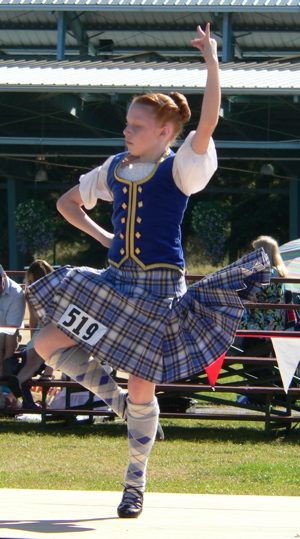|
September In The Rain (1937 Film)
''September in the Rain'' is a 1937 Warner Bros. ''Merrie Melodies'' cartoon directed by Friz Freleng. The short was released on December 18, 1937. Timed at 5 minutes and 50 seconds, ''September in the Rain'' is one of the shortest among all Warner Bros. ''Merrie Melodies'' or ''Looney Tunes'' animated short subjects. Due to the controversy engendered by the sequences considered to depict racial stereotyping, it has been most commonly edited to a much shorter running of four or even three minutes, with the invariable excision of the Fats Waller–Louis Armstrong "Nagasaki" production number and, often, the Al Jolson title song performance. Although not listed among the Censored Eleven, the cartoon has been exhibited infrequently, even in its brief censored version. Re-released under the "Blue Ribbon" label, ''September in the Rain'' was shorn of its original title card containing all the credited names, however, the recovered card, along with those for other "Blue Ribbon" reissue ... [...More Info...] [...Related Items...] OR: [Wikipedia] [Google] [Baidu] |
Ted Pierce (screenwriter)
Edward Stacey "Tedd" Pierce III (August 12, 1906 – February 19, 1972) was an American screenwriter and voice actor of animated cartoons, principally from the mid-1930s to the late 1950s. Biography Pierce was the son of a stockbroker, Samuel Cuppels Pierce, who in turn was the son of Edward S. Pierce, a long-serving treasurer of the St. Louis-based Samuel Cuppels Woodenware Company. Pierce completed his education through the fourth year of high school, according to the 1940 census records. Pierce spent the majority of his career as a writer for the Warner Bros. "Termite Terrace" animation studio, whose other notable alumni include Chuck Jones and Michael Maltese. Pierce also worked as a writer at Fleischer Studios from 1939 to 1941. Jones credited Pierce in his autobiography ''Chuck Amuck: The Life and Times of an Animated Cartoonist'' (1989) as being the inspiration for the character Pepé Le Pew, the haplessly romantic French skunk due to Pierce's self-proclamation that h ... [...More Info...] [...Related Items...] OR: [Wikipedia] [Google] [Baidu] |
Al Jolson
Al Jolson (born Eizer Yoelson; June 9, 1886 – October 23, 1950) was a Lithuanian-American Jews, Jewish singer, comedian, actor, and vaudevillian. He was one of the United States' most famous and highest-paid stars of the 1920s, and was self-billed as "The World's Greatest Entertainer." Jolson was known for his "shamelessly sentimental, melodramatic approach" towards performing, as well as for popularizing many of the songs he sang. Jolson has been referred to by modern critics as "the king of blackface performers." Although best remembered today as the star of the first talking picture, ''The Jazz Singer'' (1927), he starred in a series of successful musical films during the 1930s. After the attack on Pearl Harbor in December 1941, he was the first star to entertain troops overseas during World War II. After a period of inactivity, his stardom returned with ''The Jolson Story'' (1946), in which Larry Parks played Jolson, with the singer dubbing for Parks. The formula was repeat ... [...More Info...] [...Related Items...] OR: [Wikipedia] [Google] [Baidu] |
In The Shade Of The Old Apple Tree
In the Shade of the Old Apple Tree is a popular song dating from 1905. It was written by Harry Williams and Egbert Van Alstyne (music). Popular recordings in 1905 were by Henry Burr; Albert Campbell; Haydn Quartet; and by Arthur Pryor's Band. Other recordings were by Duke Ellington (Brunswick 6646, recorded August 15, 1933), Louis Armstrong and The Mills Brothers (Decca 1495, recorded June 29, 1937) and Alma Cogan (1962). Bing Crosby included the song in a medley on his album ''On the Sentimental Side'' (1962). The meter of its chorus is in the form of a Limerick. It can safely be characterized as a highly sentimental tune. Although the verses (seldom heard nowadays) provide further explanation, it is clear that the writer is singing about a lost love: :In the shade of the old apple tree, :Where the love in your eyes I could see, :Where the voice that I heard, :Like the song of a bird, :Seemed to whisper sweet music to me, :I could hear the dull buzz of the bee :In the b ... [...More Info...] [...Related Items...] OR: [Wikipedia] [Google] [Baidu] |
Highland Fling
The Highland Fling is a solo Highland dance that gained popularity in the early 19th century. The word 'Fling' means literally a movement in dancing. In John Jamieson's 1808 ''Etymological Dictionary of the Scottish Language'', the Highland Fling was defined as 'one species of movement' in dancing, not as one particular movement. There is some speculation that the first solo Highland Fling dances simply showed off steps that individual dancers preferred in the Strathspey Reel, a social dance. This dance is now performed at dance competitions and events around the world. One goal of dancers today is to stay in the same spot throughout the dance. The Highland Fling is danced at almost all competition levels, from primary to premier. It is also performed for Highland and theory examinations. Dancers wear a kilt to perform the dance, which is in time. A version of a Fling in a percussive dance style was remembered and danced by John Gillis in Cape Breton Island, Nova Scotia, and t ... [...More Info...] [...Related Items...] OR: [Wikipedia] [Google] [Baidu] |
Scotland
Scotland (, ) is a country that is part of the United Kingdom. Covering the northern third of the island of Great Britain, mainland Scotland has a border with England to the southeast and is otherwise surrounded by the Atlantic Ocean to the north and west, the North Sea to the northeast and east, and the Irish Sea to the south. It also contains more than 790 islands, principally in the archipelagos of the Hebrides and the Northern Isles. Most of the population, including the capital Edinburgh, is concentrated in the Central Belt—the plain between the Scottish Highlands and the Southern Uplands—in the Scottish Lowlands. Scotland is divided into 32 administrative subdivisions or local authorities, known as council areas. Glasgow City is the largest council area in terms of population, with Highland being the largest in terms of area. Limited self-governing power, covering matters such as education, social services and roads and transportation, is devolved from the Scott ... [...More Info...] [...Related Items...] OR: [Wikipedia] [Google] [Baidu] |
Thistle
Thistle is the common name of a group of flowering plants characterised by leaves with sharp prickles on the margins, mostly in the family Asteraceae. Prickles can also occur all over the planton the stem and on the flat parts of the leaves. These prickles are an adaptation that protects the plant from being eaten by herbivores. Typically, an involucre with a clasping shape similar to a cup or urn subtends each of a thistle's flower heads. The comparative amount of spininess varies dramatically by species. For example, ''Cirsium heterophyllum'' has minimal spininess while ''Cirsium spinosissimum'' is the opposite. Typically, species adapted to dry environments have greater spininess. The term thistle is sometimes taken to mean precisely those plants in the tribe Cardueae (synonym: Cynareae), especially the genera '' Carduus'', ''Cirsium'', and ''Onopordum''. However, plants outside this tribe are sometimes called thistles. Biennial thistles are particularly noteworthy for ... [...More Info...] [...Related Items...] OR: [Wikipedia] [Google] [Baidu] |
Camel (cigarette)
Camel is an American brand of cigarettes, currently owned and manufactured by the R. J. Reynolds Tobacco Company in the United States and by Japan Tobacco outside the U.S. Most current Camel cigarettes contain a blend of Turkish tobacco and Virginia tobacco. Winston-Salem, North Carolina, the city where R. J. Reynolds was founded, is nicknamed "Camel City" because of the brand's popularity. History In 1913, Richard Joshua "R. J." Reynolds, founder of the company that still bears his name, innovated the packaged cigarette. Prior cigarette smokers had rolled their own, which tended to obscure the potential for a national market for a pre-packaged product. Reynolds worked to develop a more appealing flavor, creating the Camel cigarette, which he so named because it used Turkish tobacco in imitation of then-fashionable Egyptian cigarettes. Reynolds priced them below competitors, and within a year, he had sold 425 million packs. Camel cigarettes were originally blended to have a ... [...More Info...] [...Related Items...] OR: [Wikipedia] [Google] [Baidu] |
Klompendansen
Traditional dancing in the Netherlands is often called "Folkloristisch", sometimes "Boerendansen" ("farmer-dancing") or "Klompendansen" (clog dancing). Wooden shoes are worn as an essential part of the traditional costume for Dutch clogging, or Klompendanskunst. Clogs for dancing are made lighter than the traditional 700-year-old design. The soles are made from ash wood, and the top part is cut lower by the ankle. Dancers create a rhythm by tapping the toes and heels on a wooden floor. In 2006, nearly 500 teenagers attempted the "Guinness Book of World Records" bid for the largest number of clog dancers. It took place in The Hague. They were dancing the ballet version of the Dutch clog dance rather than the folk version. The ballet ''La fille mal gardée'' contains a well-known clog dance. For this specific dance the choreography was created by Stanley Holden (1928–2007), though Frederick Ashton took overall responsibility for it. See also * Dutch folk dance Dutch folk dance a ... [...More Info...] [...Related Items...] OR: [Wikipedia] [Google] [Baidu] |
Old Dutch Cleanser
Cudahy Packing Company was an American meat packing company established in 1887 as the Armour-Cudahy Packing Company and incorporated in Maine in 1915.The Cudahy Packing Company First Mortgage 5% Gold Bonds March 2, 1922 The Milwaukee Sentinel page 7 The Cudahy meatpacking business was acquired by Bar-S Foods Company in 1981. History In 1887, Michael Cudahy, with the backing of , started the[...More Info...] [...Related Items...] OR: [Wikipedia] [Google] [Baidu] |
Pungi
The pungi (Hindi: पुंगी, ur, پُنگیپُنگی, Burmese: ပုန်ဂိ), originates from the Indian subcontinent. The instrument consists of a reservoir into which air is blown and then channelled into two reed pipes. It is played with no pauses, as the player employs circular breathing. In street performances, the pungi is used for snake charming. History The pungi is an Indian folk music instrument that is mostly played by cobra charmers in Sindh, Pakistan, and Rajasthan, India. The instrument is made from a dry hollowed gourd with two bamboo attachments. It is also a double-reed instrument. The pungi is played by Jogi in the Thar desert. It was theorized that it was made not just for snake charming, but to make people enter a half-conscious state as part of a religious practice. It is in particular played by snake charmers, mostly in the Terai and Nepal, to arouse snakes to dance. The instrument has a high, thin tone and continuous low humming. It ha ... [...More Info...] [...Related Items...] OR: [Wikipedia] [Google] [Baidu] |
Fakir
Fakir ( ar, فقیر, translit=faḳīr or ''faqīr'') is an Islamic term traditionally used for Sufi Muslim ascetics who renounce their worldly possessions and dedicate their lives to the worship of God. They do not necessarily renounce all relationships and take vows of poverty, some may be poor and some may even be wealthy, but the adornments of the temporal worldly life are kept in perspective and do not detract from their constant dedication to God. The connotations of poverty associated with the term relate to their spiritual neediness, not necessarily their physical neediness. They are characterized by their reverence for ''dhikr'' (a devotional practice which consists of repeating the names of God with various formulas, often performed after the daily prayers). Sufism in the Muslim world emerged during the early Umayyad Caliphate (661–750 CE) See Googlbook search and grew as a mystical tradition in the mainstream Sunni and Shia denominations of Islam, state Eric ... [...More Info...] [...Related Items...] OR: [Wikipedia] [Google] [Baidu] |
Spats (footwear)
Spats, a shortening of spatterdashes, or spatter guards are a type of classic footwear accessory for outdoor wear, covering the instep and the ankle. Spats are distinct from gaiters, which are garments worn over the lower trouser leg as well as the shoe. Civilian dress Spats were worn by men and, less commonly, by women in the late 19th and early 20th centuries. They fell out of frequent use during the 1920s. Made of white cloth, grey or brown felt material, spats buttoned around the ankle. Their intended practical purpose was to protect shoes and socks from mud or rain, but also served as a feature of stylish dress in accordance with the fashions of the period. Emily Post's 1931 ''Etiquette: The Blue Book of Social Usage'' stated, ''Spats are optional. If chosen, they must match the gloves exactly.'' Increased informality may have been the primary reason for the decline in the wearing of spats. In 1913, friends scrambled to help Griffith Taylor find spats and a top hat to r ... [...More Info...] [...Related Items...] OR: [Wikipedia] [Google] [Baidu] |






_in_Eastern_Bengal_in_the_1860s.jpg)